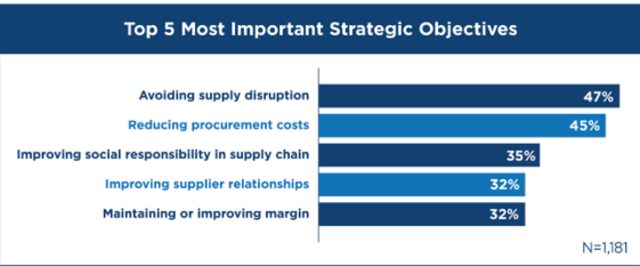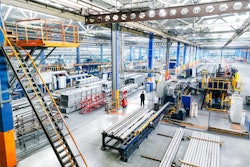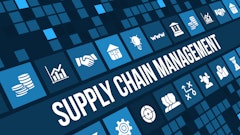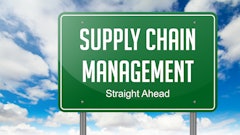
It’s difficult to overestimate the degree to which procurement has changed during the past five years as a result of numerous and varied disruptions. For example, over two-thirds of respondents to APQC’s procurement survey (71%) said that they have seen their procurement processes and systems undergo moderate or significant transformation. Nine percent of those respondents said that changes over the past five years have been so extensive that they feel their procurement processes and systems have changed beyond recognition. For nearly all respondents, procurement is a function in flux.
Many of the changes that have happened over the past five years are undeniably for the better. However, procurement still has opportunities to strengthen relationships with suppliers in ways that drive added value for companies and their supply chains.
Procurement is Shifting its Strategy
Procurement’s strategic objectives are shifting in line with broader changes in the business environment. In the past, cost reduction and maintaining or improving margin would have been the two most important objectives for procurement. However, APQC found that avoiding supply disruption is now the most common strategic objective, followed by reducing procurement costs. Other notable objectives include improving social responsibility in supply chain, improving supplier relationships, and maintaining or improving margin (Figure 1).
 APQC Fig. 1
APQC Fig. 1
Supplier Relationship Priorities are Also Shifting
A broader shift in procurement’s strategy has, in turn, led to a shift in procurement’s relationship with suppliers. Whereas price would have likely been a top focus of supplier relationships in previous years, only 12% of respondents identified it as the top focus of supplier relationships. By comparison, the top three areas of focus are now a supplier’s ability to deliver (25% of respondents), supplier capabilities (22%), and sustainability (16%).
It makes sense to see that sustainability has taken on increased importance for procurement, as supply chains are under increased pressure not only to report and reduce their own greenhouse gas (GHG) emissions but also to reduce GHG emissions from their suppliers. Many organizations are also considering sustainability within the broader framework of ‘environmental and social governance,’ which means accounting for labor practices and human rights in procurement decisions. It’s more important than ever to have visibility into supplier sustainability for those reasons and more.
It’s refreshing to see price near the bottom of the list behind priorities like these. However, the fact that innovation is at the bottom of the list (identified by only 10% of respondents) reflects the fact that companies are continuing to overlook the opportunity to innovate with their suppliers.
Interestingly, more than a third of respondents (35%) say they regularly measure and record supplier information on innovation in products or services. It’s not the case that companies are ignoring innovation altogether, but they may be expecting their suppliers to do all of the work of innovation rather than actively collaborating with them. Given how few organizations prioritize innovation as a priority for supplier relationships, those that do prioritize this area could see greater competitive advantage as a result.
Cost is important—But so are Other Priorities
Broader shifts in procurement’s priorities do not mean that cost is now irrelevant—it’s just one priority among others that are growing in importance. Cost reductions and the total cost of ownership are the second most common type of supplier information that organizations regularly measure and record (36% of respondents), coming only behind supplier on-time delivery. Organizations are also tracking measures of supplier capacity flexibility (31%) and responsiveness (27%) to keep supplier disruptions at a minimum. Procurement still has opportunities to set aside more resources to measure supplier quality, the willingness and ability of suppliers to introduce collaborative technology, and supplier efforts toward reducing GHG emissions.
Key Takeaways
As procurement continues to change and evolve in line with broader macrotrends, organizations continue to have an opportunity to collaborate with suppliers on innovation and to set aside resources to better measure suppliers in areas like GHG emissions. In the meantime, procurement has already changed for the better in many ways over the past five years. While procurement has an important responsibility to be a good steward of an organization’s financial resources, a greater focus on resiliency and continuity of supply is vital. What does it even mean to save a few pennies when your customers can’t count on you for what they need because your supplier doesn’t have it? Focusing on continual resiliency and innovation helps ensure that supply chains are ready for today and whatever tomorrow will bring.

![Pros To Know 2026 [color]](https://img.sdcexec.com/mindful/acbm/workspaces/default/uploads/2025/08/prostoknow-2026-color.mduFvhpgMk.png?auto=format%2Ccompress&bg=fff&fill-color=fff&fit=fill&h=100&q=70&w=100)







![Pros To Know 2026 [color]](https://img.sdcexec.com/mindful/acbm/workspaces/default/uploads/2025/08/prostoknow-2026-color.mduFvhpgMk.png?ar=16%3A9&auto=format%2Ccompress&bg=fff&fill-color=fff&fit=fill&h=135&q=70&w=240)









